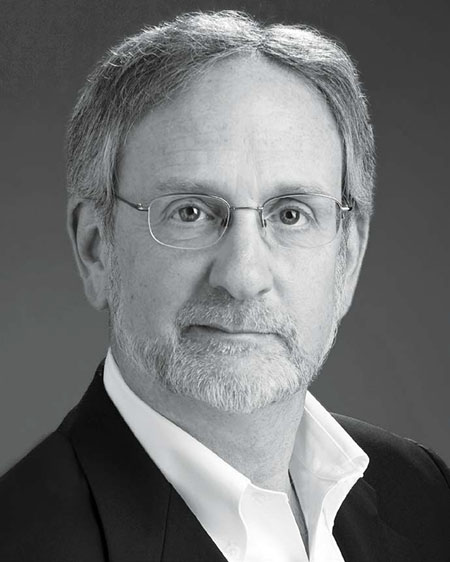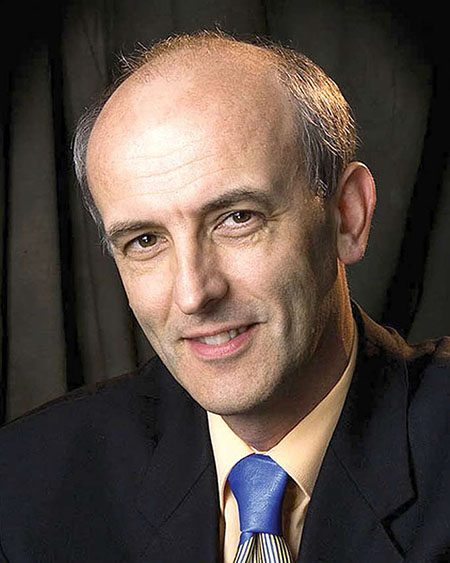SaaS Harnesses Web for Productivity
ALEXANDRIA, VA.—The internet has permanently changed how we do just about everything in our professional lives, from making travel plans to giving us the very tools we use to complete our work. As connection speeds improve geometrically, “the cloud” becomes an ever-more attractive place to do the real work of content creation, transcoding, distribution and storage.
So it is with software as a service (SaaS), a category of internet offering that was not available five years ago but now has key advantages for television and film operations. Let’s take a look at what it can do, then see where it might make sense for your operation.

Andrew Warman, director for cloud product management at Harmonic Inc.
“SaaS is a way for a third-party provider to host software applications and make them available to customers to use over the internet,” said Andrew Warman, director of cloud product management for Harmonic Inc. in San Jose, Calif. “It removes the need for organizations to install and run applications on their own data centers. Moreover, it takes away all the headaches involved with buying, provisioning and maintaining hardware, including the need to manage software licensing and deal with support issues. All these aspects of owning and operating hardware are replaced by a fee paid to use the services.”
This lack of up-front capital expense can foster experimentation and new video services, once SaaS is widely understood and the concept grasped.
“SaaS lends itself to a variety of operating models, including cases where initial cost of deploying conventional solutions is seen as risky, expensive and/or too time-consuming,” Warman said. “Launching a service is fast; there are no upfront startup costs, and operation of the hardware and software is handled by the service provider, reducing—if not entirely removing—these constraints. SaaS enables operators to launch and stop on-demand services, as needed, without paying for unused or under-utilized infrastructure when the service is dormant or if it is no longer necessary.”
AFFORDABLE ONE-TIME EVENTS?
Need a concrete example?
Get the TV Tech Newsletter
The professional video industry's #1 source for news, trends and product and tech information. Sign up below.
“Consider the situation in which a local broadcaster had an opportunity to air a concert or speech at a local venue,” said Steve Reynolds, chief technology officer for Imagine Communications in Dallas. “Normally, the capital expense to put in place integrated channel playout for what might be a onetime event would be too high. A SaaS model would allow [a broadcaster] to experiment with these types of live events.”
If you are a content creator with the chance to take on additional projects, SaaS can provide workflow efficiency as well as help you avoid much of the pesky capital expense to outfit new editing stations and in-house shared storage.
“SaaS not only allows scale-up capabilities, but provides one thing that typical CAPEX models do not provide, and that is scale-down,” Reynolds said. “A business can take on larger projects and grow as necessary. SaaS would allow a content creation company to grow incrementally, while optimizing its overall infrastructure cost and moving between CAPEX investment and OPEX based on its particular needs.”
For many broadcasters, their news programming is the focus of their operations. Where can SaaS fit into the production of local broadcast news?
“A news service will provide its stories in individual segments that are then distributed to the service’s customers—i.e., broadcasters—mostly in standard broadcast formats,” said Raja Srinivasan, product manager for Telestream’s Cloud offering. “However, many broadcasters also receive local news stories from stringers, or even from the general public. These feeds will come into the station in a variety of formats, and the cloud offers these providers a simple way to take their news stories and make them broadcast ready—maybe even adding [lower-third graphics].”
Srinivasan cited a recent project with Calkins Media, a New Jersey-based station group that used the Telestream Cloud Advanced Service on a “pay-per-minute” basis to allow Verizon to offer some of Calkins’ programming on-demand.
“Alternatively, a broadcaster may use cloud transcoding technology to supplement its in-house transcoding capabilities for those times when there is a peak in incoming material [such as a major fire or other event],” he said. “Calkins Media is an excellent example of a broadcaster that uses cloud transcoding in this way.”

Lawrence Kaplan, president and CEO of SVDI Corp.
ATSC 3.0 AND SAAS
ATSC 3.0 is coming and broadcasters are now planning on how and when to implement this new standard. How does SaaS figure into ATSC 3.0?
“One of the biggest changes in ATSC 3.0 is the inclusion of 4K-resolution video,” said Ian Hamilton, chief technology officer of U.S.-based Signiant. “With broadcast moving to a 4K future with ATSC 3.0, we expect a lot more 4K content to be produced for television. All this content will need to be moved through today’s globally distributed production ecosystems and supply chains. Sending these much larger files over IP networks, quickly, reliably and securely will be a major concern for broadcasters, and a proven SaaS solution like Signiant’s Media Shuttle will be the easiest, fastest and most economical means of doing so.”
SaaS is not necessarily targeted at big or small clients—it’s more about the needs and imagination of the client.
“On-demand access to an application as a service is a highly efficient, cost-effective alternative to a traditional software license,” said Lawrence R. Kaplan, president and CEO of SVDI Corp. in Sunnyvale, Calif. “SaaS enables consumption-based pricing—infrastructure on demand. SaaS-based access to an application would be a great advantage to any user who has an unpredictable requirement to process 4K files. Of course, dealing with 4K requires special consideration. SVDI’s Rally is an SaaS application hosted in a public cloud, but the processing resources and files being processed can be located anywhere. For example, it may make sense to process a 4K file on premises, rather than in a public cloud.”

Ian Fletcher, chief technology officer for media at Grass Valley
PLAN FOR CLOUD-BASED APPS
Some of what SaaS does sounds a lot like what a product will do, but it does it across the web. Ian Fletcher, chief technology officer for media at Montreal-based Grass Valley, suggested that getting the most from SaaS technology means planning cloud-based operations instead of specific hardware-dependant tasks.
“The most important thing to understand about SaaS and cloud technology is the difference between a true cloud architecture and simple virtualization; this is an area that is often misunderstood,” Fletcher said. “Many of today’s current cloud deployments are really nothing more than existing products running on VMs in a data center. Although this may have some benefits for certain types of customers, fundamentally it is still operating the same as conventional playout systems—all the broadcaster has really done is made the cable longer between him and his equipment room.”
If you are still unsure about how SaaS works, industry consultant Al Kovalick, founder of Media Systems Consulting, said that “flinging watts into the ether” will not be affected by SaaS but just about everything else will.
“All aspects of media workflows and applications will be affected, including MAM, craft editing, logging, review and approval, scheduling, video processing, office productivity apps, and many more areas,” Kovalick said.
Although the first word in SaaS is “software,” SaaS is more than just another way to edit or transcode video. Properly configured for your use, it can offer the chance to try new projects, reach new viewers and save on capital expenses. Or if you simply need to scale up what you are already doing, there’s probably a SaaS partner to help you get that done quickly.
Bob Kovacs is the former Technology Editor for TV Tech and editor of Government Video. He is a long-time video engineer and writer, who now works as a video producer for a government agency. In 2020, Kovacs won several awards as the editor and co-producer of the short film "Rendezvous."

